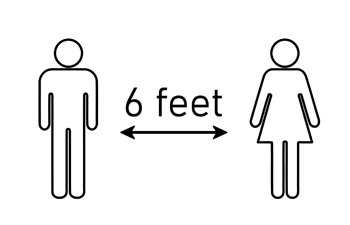Residential Practice in COVID
Social Distancing
According to the CDC, social distancing, also called “physical distancing”, is defined as “keeping space between yourself and other people outside of your home, limiting face-to-face contact with others”. To practice social distancing, it is important to stay at least six feet away from other people, to not gather in groups, and to stay out of crowded places, and avoid mass gatherings. Social distancing is the best way to reduce and slow the spread of COVID-19 locally, across the country, and around the world.
The CDC further explains that as people can spread the virus before they are symptomatic or know they are sick, it is vital to stay away from others, especially those who are at higher risk for severe illness from COVID-19 including those with pre-existing medical conditions. For individuals who work or live in settings such as congregate care or residential environments, covering one’s mouth and nose with masks or other cloth face coverings will help to prevent the spread of respiratory fluids that may contain the virus.
In this guide, we discuss the various ways in which residential centers implement social distancing throughout the work environment to ensure the safety of staff and children. In conjunction with social distancing, it is imperative that staff and children wash their hands with soap and water as often as possible for at least 20 seconds, especially after having been in public places, in contact with others, or after blowing one’s nose, coughing or sneezing. Throughout residential programs, the efforts to ensure social distancing involve adjustments to the workforce, to the physical campus facilities, recreational and educational activities for children, and more. This guide considers social distancing throughout all areas discussed to promote and ensure safety.
Sometimes children or individuals with intellectual or developmental disabilities need specific, easy-to-understand, and/or visual instructions. The attached printables provide specific language and visual guides that are accessible to most.
Attachments:
Social Distancing Printable for Youth: Do’s and Don’ts of Social Distancing
